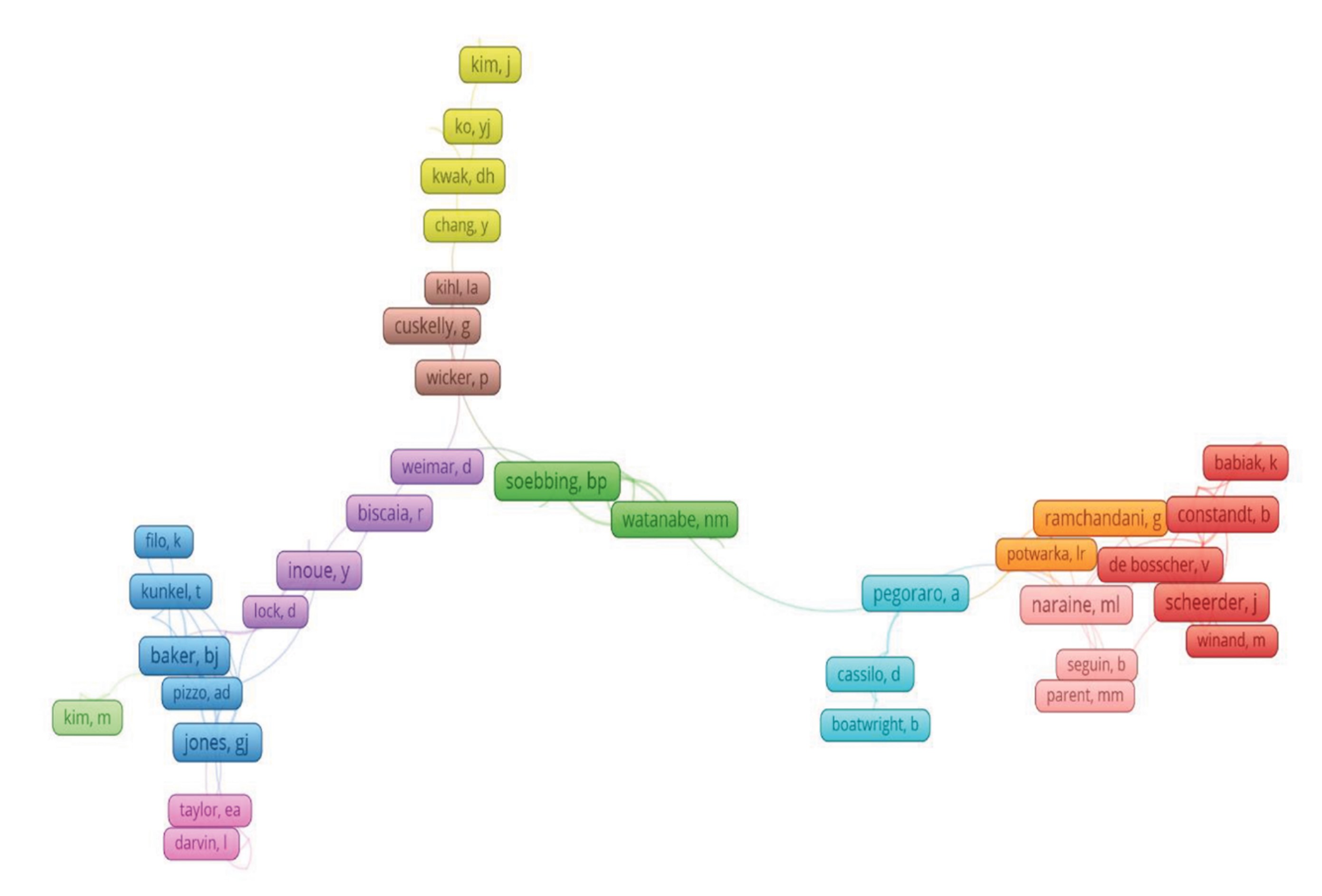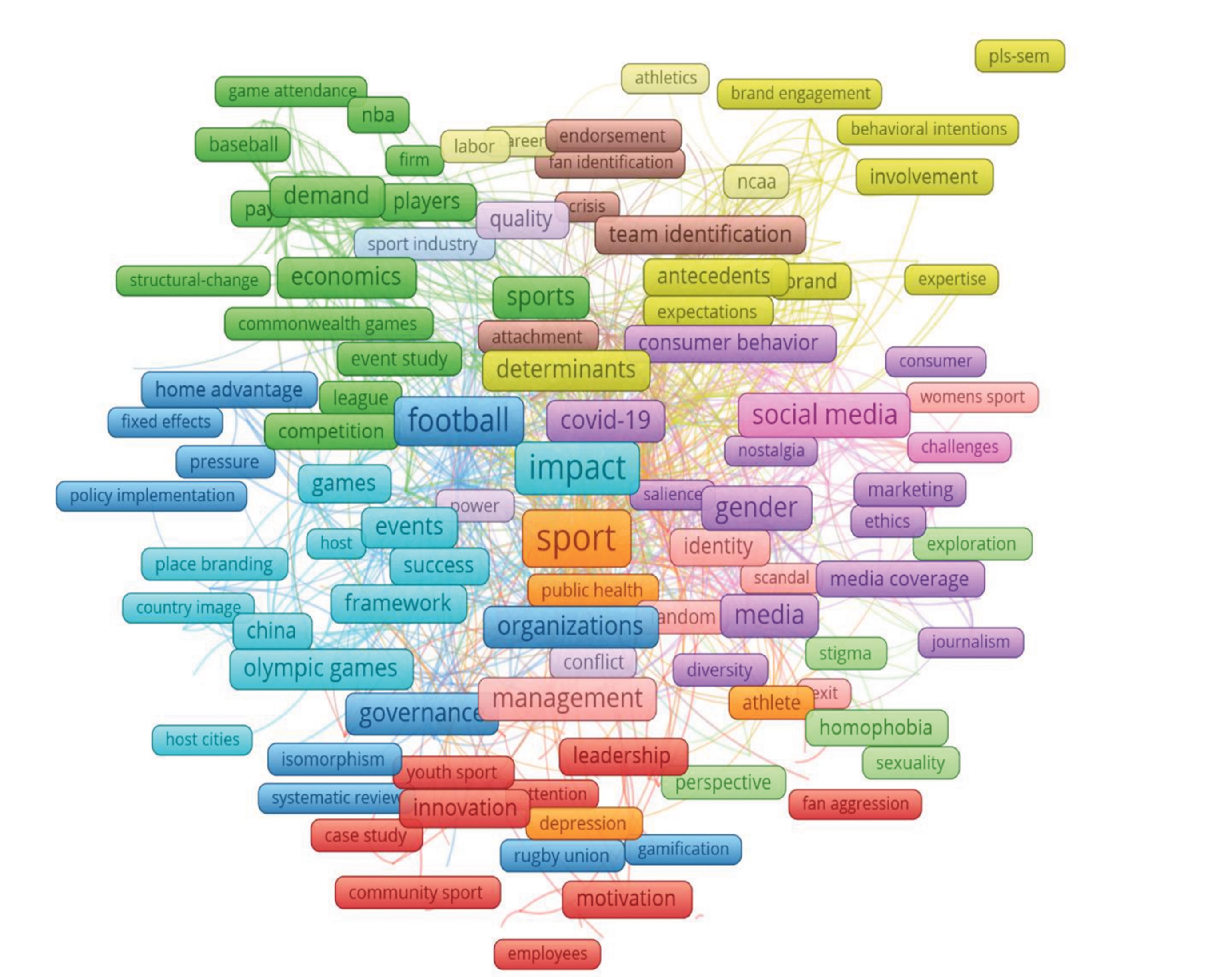Research Article
State of Sport Management Research in 2021: An Overview

The aim of this introductory article of the Sport Management Digest (SMD) is to provide an overview of the research published in the ten specialised journals during 2021. Individual sections of the SMD cover in sufficient detail the main topics and key findings of different subject areas. Even a cursory view of the published works suggests that sport management scholarship has been growing in scope, geography and appeal. The present overview of research in the field focuses on three interrelated areas including a bibliometric analysis, theoretical and practical appeal, as measured by the funding received by different studies, and the democratization of knowledge, as exemplified by the number of studies published under the Open Access (OA) regime.
The second issue of the SMD includes an innovation in the form of an analysis of the geography of sport management research. This is an important aspect of the research conducted in the field because it provides a temporal map of the geographical distribution of sport management studies as well as their context in terms of sports and settings where research was conducted. The analysis was conducted by Professor Xiaoyan Xing from the Capital University of Physical Education and Sports, the Beijing Institute for International Olympic Studies. One of the main conclusions to be drawn from her analysis is that, unsurprisingly, sport management remains a highly contextual activity, and our research has been shaped by established cultural preferences and sport structures.
In 2021, the ten sport management journals published a total of 47 issues with 444 articles (excluding book reviews and commentaries). Table 1 shows the number of articles by journal including those published under OA, which is discussed below. These articles were written by 975 authors affiliated with 557 institutions which is a testimony to the scale of sport management research internationally. The number of articles in different journals is determined by several factors including page budgets allowances from publishers and special issues. The latter have become a regular feature for most journals and serve to advance knowledge on specific topics such as those addressed in 2021 including sustainability, Covid and big data and analytics.
Table 1: Total number of articles and Open Access ones published in 10 sport management journals in 2021
| Journal | Founded |
Publication frequency/ year |
Impact factor 2021 |
Articles No |
Open Access No/% |
|---|---|---|---|---|---|
|
Journal of Sport Management https://journals.humankinetics.com/view/journals/jsm/jsm-overview.xml |
1987 |
5 |
3.69 |
56 |
9/16 |
|
Sport Management Review |
1998 |
5 |
6.57 |
69 |
15/22 |
|
International Journal of Sports Marketing
|
1999 |
4 |
2.93 |
63 |
4/6 |
|
European Sport Management Quarterly |
2001 |
5 |
4.00 |
70 |
22/31 |
|
International Journal of Sport Finance |
2006 |
4 |
0.94 |
15 |
2/13 |
|
International Journal of Sport Communications https://journals.humankinetics.com/view/journals/ijsc/ijsc-overview.xml |
2008 |
4 |
N/A |
30 |
3/10 |
|
0.69International Journal of Sport Policy and Politics |
2009 |
4 |
0.69 |
54 |
16/30 |
|
Journal of Sports Economics |
2011 |
6 |
2.22 |
52 |
15/29 |
|
Communication and Sport https://journals.sagepub.com/home/com |
2013 |
6 |
3.17 |
54 |
18/33 |
|
Journal of Global Sport Management https://www.tandfonline.com/loi/rgsm20 |
2016 |
4 |
N/A |
46 |
12/26 |
Table 2 illustrates the top 10 publishing countries by authors’ institutional affiliation and the number of outputs. As might be expected, USA-based scholars (33 or 9%) have been responsible for most of all published studies in 2021 (195 or 51%). The contribution of American scholars is followed by those from England (scholars based in Scotland, Wales and Northern Ireland are counted separately), Canada, Germany and other countries. Encouragingly, there has been research from traditionally less-represented parts of the world including Indonesia, Serbia, Uzbekistan and Turkey, among others. The above publication metrics are also indicative for the presence of a critical mass of scholars, doctoral and undergraduate students enrolled in various SM programmes.
Table 2: Top 10 publishing countries and institutions by authors’ affiliation (2021)
| Country |
No articles (%) |
Authors’ affiliation institutions |
No authors (%) |
|---|---|---|---|
|
USA |
195 (51) |
State University System of Florida |
33 (9) |
|
England |
55 (14) |
University System of Georgia |
19 (5) |
|
Australia |
45 (12) |
University of Florida |
17 (4) |
|
Canada |
41 (11) |
Pennsylvania Commonwealth System Higher Education |
16 (4) |
|
Germany |
37 (9) |
Temple University |
15 (4) |
|
Belgium |
14 (4) |
Texas AM University System |
14 (4) |
|
South Korea |
13 (3) |
Loughborough University |
11 (3) |
|
Japan |
12 (3) |
Texas AM University College System |
11 (3) |
|
Norway |
11 (2) |
University of Massachusetts Amherst University of Massachusetts Systems University of Michigan University of Michigan System West Virginia University |
10 (3) |
|
Spain |
11 (2) |
||
|
China |
9 (2) |
Ninety-seven agencies including research councils, governments, charities and commercial companies funded research published in the ten journals. The greatest number of studies were funded by the Social Sciences and Humanities Research Council of Canada which provided grants for 6 projects on which these were based. The spectrum of funding sources also includes major sport organisations such as the International Olympic Committee, UEFA, Sport Australia, UK Sport and Sasakawa Foundation and speaks to the appeal and potential impact of the sport management research conducted.
The introductory article to the first issue of the SMD (2021) discussed the democratisation of knowledge as promoted by the Open Access (OA) approach to publication. The rationale and main principles of the OA approach were laid out in the document Plan S that was launched in September 2018. It represents a drive for an instant and free access to research and can be found at this link (https://www.coalition-s.org/guidance-on-the-implementation-of-plan-s/). The main principle of Plan S stipulates that “with effect from 2021, all scholarly publications on the results from research funded by public or private grants provided by national, regional and international research councils and funding bodies, must be published in Open Access Journals, on Open Access Platforms, or made immediately available through Open Access Repositories without embargo.”
Leaving the challenges of implementing Plan S aside, this approach will significantly change the publishing landscape and the rate and scope of future research. Out of the 444 published articles analysed in the SMD, 97 (20%) were OA (see Table 1). Without exception, all journals published OA articles and some of them are faring better than others with a rate of OA articles between 20-33%. Nonetheless, regardless of the OA funding model, those countries and institutions who do not have access to resources will be in a disadvantaged position compared to those who can afford to pay the publication fee. This is a serious concern given that the cost of publishing a single article could be up to $6,000 and more. This is a significant amount of money that will allow any institution to subscribe for all ten journals included in the SMD for a year. Readers can check out the OA policy of their targeted journal by using the ‘Journal checker tool’ (https://journalcheckertool.org/).
The reminder of the bibliometric analysis examines the strength of the links between sport management research by looking into the co-authorship links (i.e., the number of publications two researchers have co-authored), co-occurrence links (i.e., the number of publications in which two terms occur together), and the bibliographic coupling links (i.e., the number of cited references two publications have in common). The strength of the link is represented by a positive numerical value where the higher the value the stronger the link. The analysis and the visualisation of the results were produced using the VOSviewer software (van Eck & Waltman, 2020). It ought to be noted though that due to the limited time subject to analysis (12 months), the co-authorship and co-occurrence links reported cannot be representative of the sport management field as a whole, rather they ought to be viewed as a snapshot. Nonetheless, it is expected that as more data becomes available over time, the analysis will become more comprehensive.
Figure 1 depicts the co-authorship links where two authors had worked together on a publication. In total 73 authors collaborated with each other, and the different colours in figure 1 help see those collaborations. Figure 2 shows the co-occurrence links, where in total 112 key words were selected which occurred more than 5 times. The size of the word indicates its weight. Figure 2 also helps to see the distance between two words where the higher the distance the lesser the connectedness. For example, the word ‘impact’ dominated in the research published. The study of ‘impact’ is closely related to ‘events’, the ‘Olympics’ and ‘success’ and less to ‘host cities’. Similarly, the word ‘football’ is closely related to ‘organisations’ and ‘governance’, whereas ‘economics’ is related to ‘demand’, ‘pay’ and ‘players’.
Both the different types of networks and the author co-citation (ACC) analysis have the power to reveal the intellectual structure of the sport management discipline. The Sport Management Digest will continue to analyse the intellectual structure of the discipline which will help researchers and practitioners to readily understand who and where conducts what kind of research. This information is also valuable for devising research strategies of different centres, departments, and universities as well as academic publishers. It is hoped that readers will find this analysis useful.
Figure 1. Co-authorship network visualization across ten SM journals in 2021

Figure 2. Co-occurrence network visualization ten SM journals in 2021

As stated in the general introduction to the Sport Management Digest, it represents a new type of publication which aims to provide a high-level synthesis of the research in the field. Therefore, the SMD should not be perceived as a competitor to the existing journals rather as a complementary publication freely available to the global sport management community.
References
Van Eck, N. J., & Waltman, L. (2010). Software survey: VOSviewer, a computer program for bibliometric mapping. Scientometrics, 84(2), 523-538. https://doi.org/10.1007/s11192-009-0146-3
